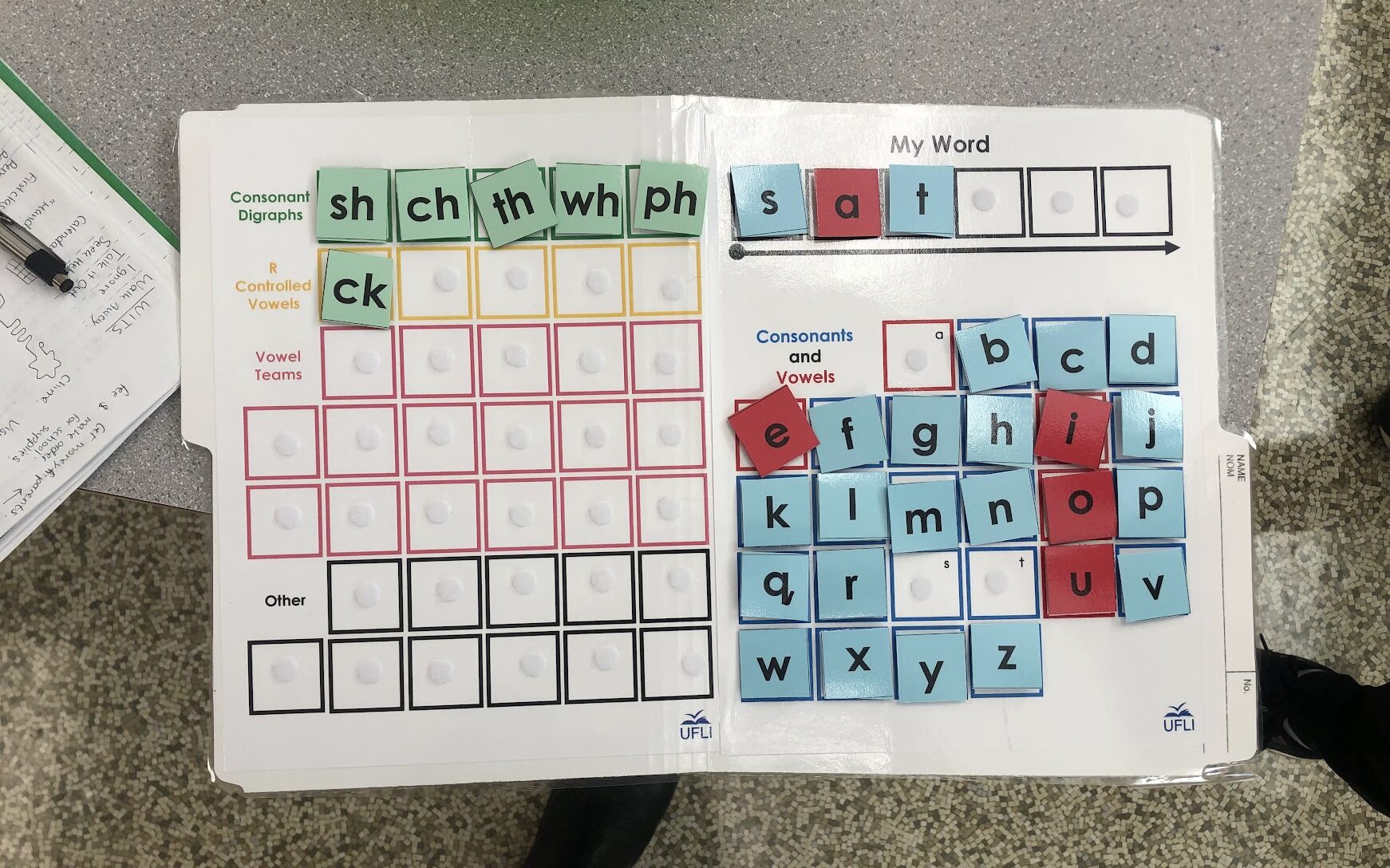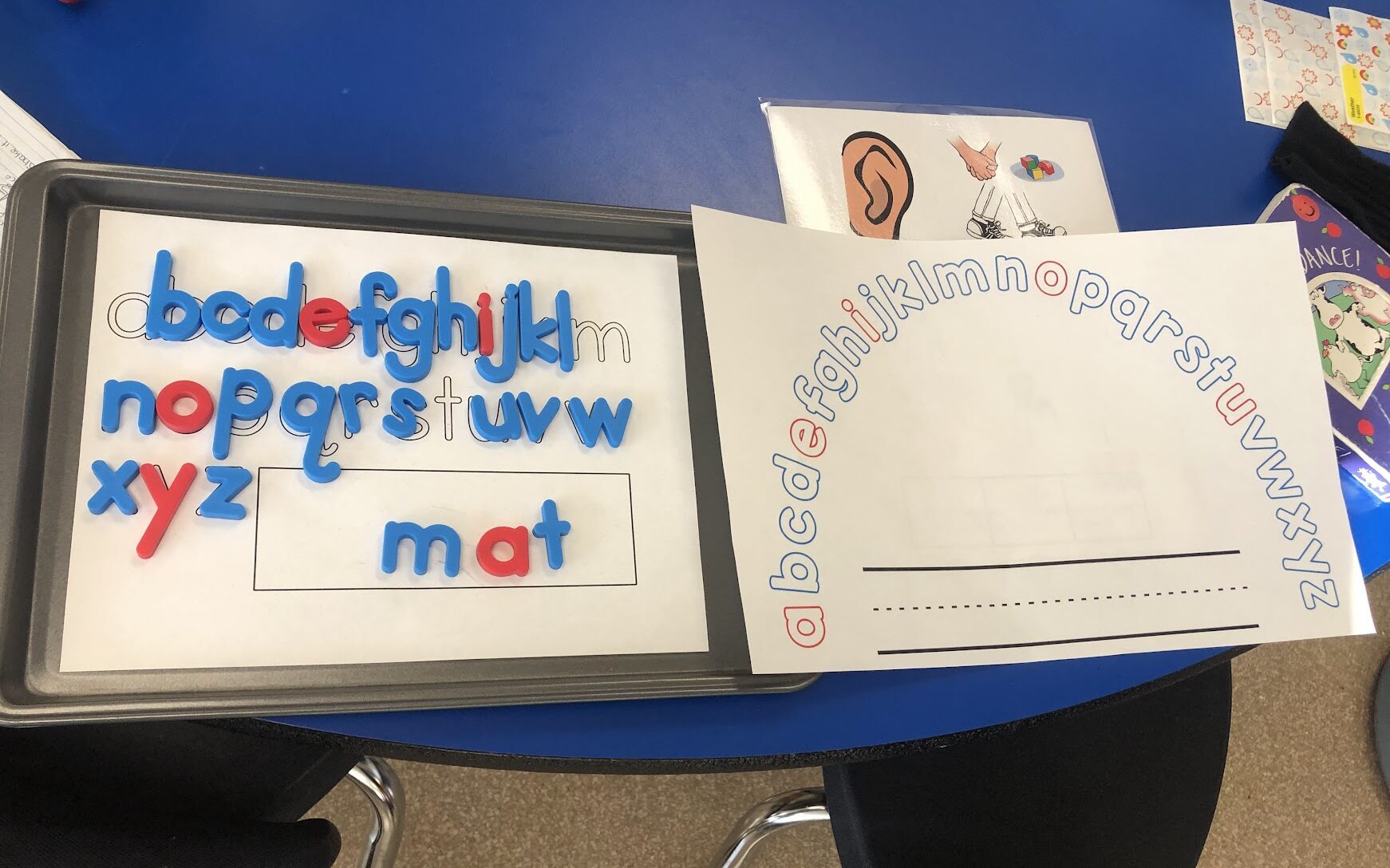Sarah McNeil from Spruceland Elementary is an English Language Learning educator, and was able to come see our elementary years cohort twice, and what a treat that was for us!
Sarah’s presentation was entirely about the UFLI Foundations program, which is currently making its way through the school district and into classrooms, as many of us student teachers noticed in observation practicum. Here are some of the different ways I observed UFLI resources being used in the classroom.



The program is making headway within central northern interior classrooms because, unlike preceding literacy programs, it offers a research-based approach to decoding text. Decoding itself has two aspects, Phonics and, Phonological Awareness, which are two of the five pillars of literacy, along with fluency, vocabulary and comprehension. These five pillars are the foundational perspective of the scientific view of reading.
“The science of reading is a cumulation of research in the fields of education, psychology, linguistics, and neuroscience, forming an educational roadmap for two key concepts: what students need to learn and how they need to learn it”
Diaz, Istation
The scientific view of reading expands on the simple view of reading, which views reading comprehension as composed of the ability to decode text, in combination with linguistic comprehension. This is still a view we hold today, but we now understand that decoding, and linguistic comprehension require sets of other abilities to master, hence the five pillars.
The five pillars of reading were introduced after a significant study, put together by the US Congress in the 1990s, to evaluate the scientific research literature on reading, and through evidence-based assessment, determine its implications for reading instruction (The National Reading Panel Report).
Much of this was not new news to our cohort. On Our Pro-D Day in, January, myself and many others were fortunate enough to attend lectures from educator Adrienne Gear–additionally, author of various books focused on literacy in the elementary classroom. Moreover, the time we spent in observation in classrooms made us privy to the compliments of many teachers regarding the usefulness and facility of the UFLI program in teaching two of the five pillars. However, having knowledge and knowing how to use it are dissimilar coins. You might say that many of us felt like a baker in the kitchen, with all the ingredients, a cake order, and no recipe to make it. We therefore all felt immensely aided when Sarah planned out time to walk us through a UFLI lesson as both student and teacher.
After having laid out a brief history of the pedagogy of reading over the last 50 or so years, Sarah spent the larger portion of class taking us through exercises, from the point of view of the teacher, and the student. This allowed us to gauge the general benefits, difficulties and overall experience of the program for students, as well as become familiar with the content and pace of the program as we would have to deliver it in practice. She also took us to their website, showing us how to find their materials, and explained to us how and why her school had made specific choices in how they organized their UFLI materials, giving us tips and tricks to facilitate lesson prep and student learning. By the end of the day, most of our cohort felt ready to bake our ABCs! Sarah’s enthusiasm for the program spilled into what was an immensely educational, inviting, and inspiring experience, and I would be remiss if I didn’t mention that her authenticity and care improved the quality of our first serious experience with UFLI.
Thank you, Sarah!
Works Cited
Diaz, Andi. “Understanding the Science of Reading”. Istation, Aug. 2 2022. www.istation.com/
National Reading Panel, “Teaching Children to Read: An Evidence-Based Assessment of the Scientific Research Literature on Reading and Its Implications for Reading Instruction”. NIH Pub. No. 00-4769, Apr. 2000.
UFLI, www.ufli.education.ufl.edu/